Fresh mushrooms are delicious, and their umami taste adds a unique richness to almost any dish. But, fresh mushrooms generally don’t have a long shelf life.
People often leave their fresh mushrooms in the fridge for a few days and then have to throw slimy, spoiled mushrooms into the compost.
Fortunately, you can extend your mushrooms’ shelf life by first selecting the freshest mushrooms and then storing them correctly.
Read on to learn what to look for when selecting fresh mushrooms and how to store mushrooms to keep them fresh longer.

How to Select the Best Fresh Mushrooms
Here are some things to look for when buying fresh mushrooms:
- Firm, plump mushrooms with dry surfaces
- Smooth, evenly-colored mushrooms without bruising or dark spots
- Younger mushrooms with caps that are not fully open or shriveled around the edges
- Loose mushrooms or mushrooms that are pre-packed using perforated plastic
Although different types of mushrooms may have different physical characteristics, certain telltale signs show a mushroom is bad, no matter the species.
How to Tell if Mushrooms are Bad
The easiest way to tell if mushrooms are bad is by looking at them, feeling them and smelling them.
Slimy, shriveled or discolored mushrooms or mushrooms with a strong odor are definitely starting to go bad and will not last long.
Our article, “How to Tell if Mushrooms are Bad: The Telltale Signs,” has more information on what to look for and which mushrooms to avoid when selecting fresh mushrooms.
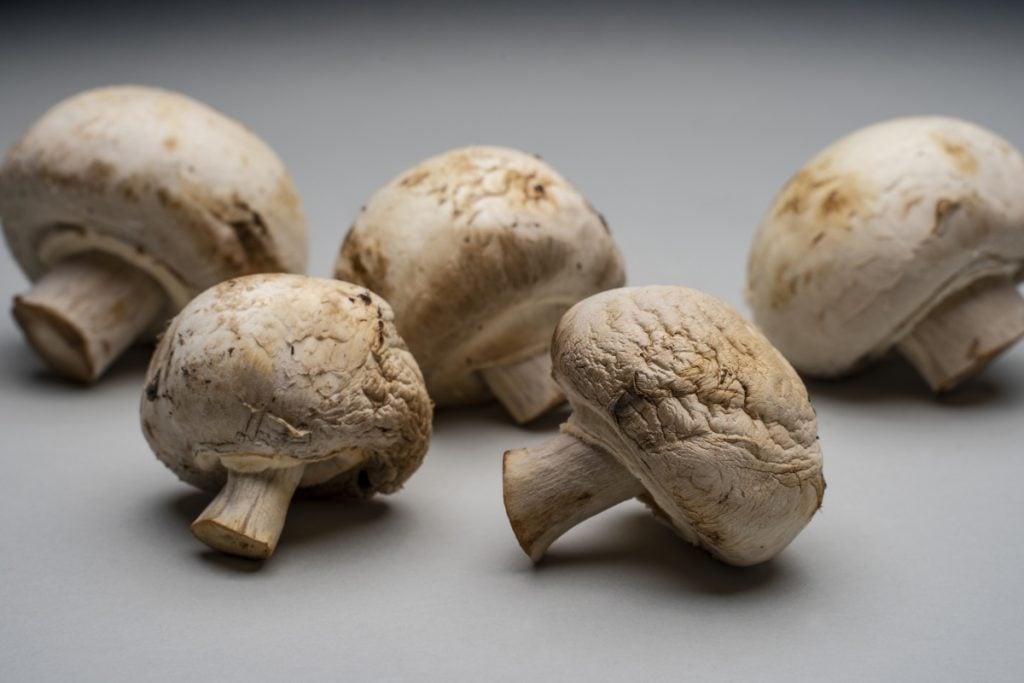
How Do You Keep Mushrooms Fresh Longer?
Mushrooms are highly perishable because they don’t have skin to protect them from damage, water loss or contaminants.
Three key principles play a role in keeping mushrooms fresh longer:
1. Prevent The Mushrooms From Drying Out
Fresh mushrooms have a high water content of 85 – 95%. After harvest, they lose moisture through evaporation and respiration.
If you store mushrooms uncovered, the airflow around them will quickly dry them out, and they’ll shrink and begin to wrinkle.
It’s best to store them in breathable packaging that allows excess moisture to escape, but keeps drafts out.
2. Keep The Mushrooms Away From Excess Moisture
When stored in sealed containers, the moisture released by fresh mushrooms accumulates inside the container.
The excess moisture and lack of fresh air then causes the mushrooms to get slimy and encourages the growth of bacteria.
Washing mushrooms before storing them also reduces their shelf life as they may absorb extra moisture during washing.
It’s best to store your mushrooms unwashed and whole to keep them fresh longer.
3. Slow Down The Decaying Process
Mature mushrooms produce enzymes that cause browning and discoloration.
And after harvesting, mushrooms of all ages begin to decay as their high respiration rate causes moisture loss.
Storing mushrooms at lower temperatures helps to slow down their metabolism and the decaying process.
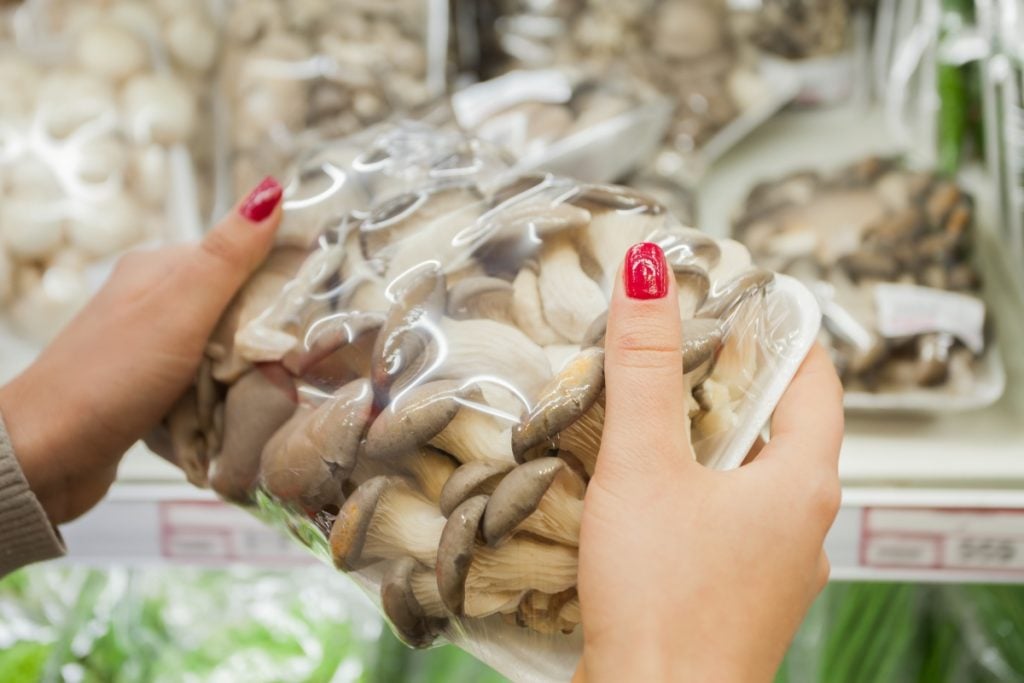
How Long Do Mushrooms Last?
Most mushrooms will last 1 to 3 days at room temperature, but time frames vary, depending on the species and how people handled the mushrooms during harvesting and packaging.
Selecting fresh mushrooms and keeping them at lower temperatures will help them last longer.
Our article, “How Long Do Mushrooms Last? Everything You Need To Know,” has more information on the shelf life of mushrooms.
Should mushrooms be kept in the fridge? Yes, you should keep mushrooms in the fridge unless you plan on using them immediately.
It’s best to put your mushrooms in the fridge as soon as possible after buying them and ideally store them at temperatures of 34 to 39°F (1 to 4°C).
How Long Do Mushrooms Last in The Fridge?
When stored properly, whole fresh mushrooms last for around 7 days, and some may even last up to 10 days.
In the sections below, we look at the methods you can use to store fresh mushrooms as long as possible in the fridge.
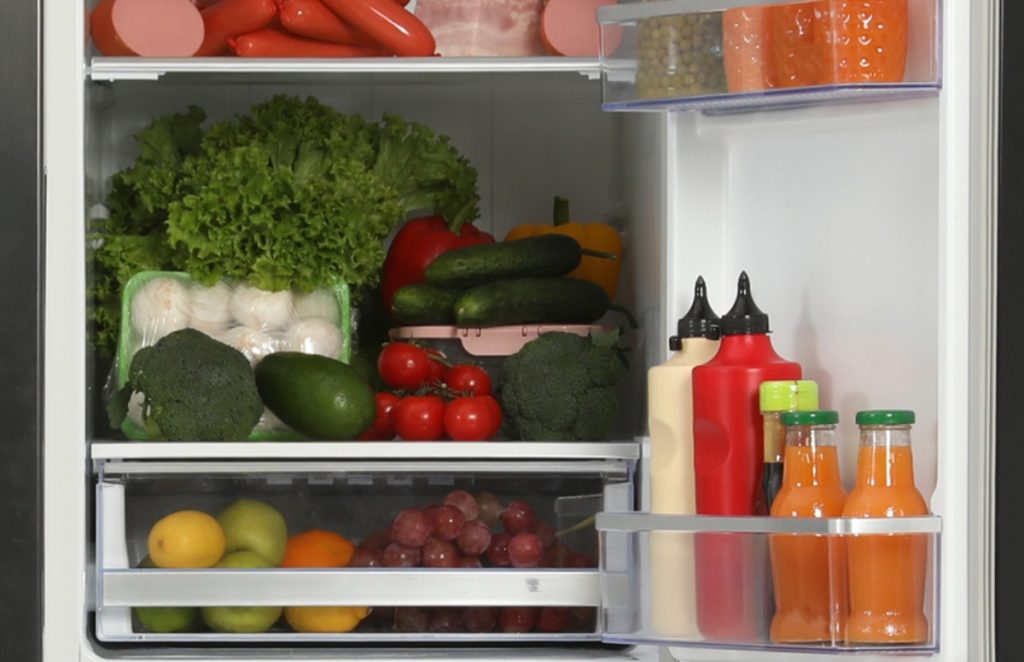
How to Store Mushrooms in the Fridge
Storing mushrooms in the fridge helps to slow down decay and extend their shelf life, but you need to store them correctly to get the best results.
Here are a few things to avoid if you want your mushrooms to stay fresh longer:
- Avoid washing your mushrooms immediately – Store-bought mushrooms are often very clean and may only need a light rinse.
But even so, it’s better to only clean your mushrooms when you’re ready to use them.
Washing them before putting them in the fridge will reduce their shelf life. Our article on cleaning mushrooms has more information on how and when to clean your mushrooms.
- Avoid slicing your mushrooms – Whole mushrooms last longer than sliced mushrooms as they have less surface area exposed to moisture and contaminants.
It’s best to only slice or chop your mushrooms just before cooking them and only buy sliced mushrooms if you plan on using them within 2 days.
- Avoid storing mushrooms in the crisper drawer – The environment in a crisper drawer is often too moist for mushrooms. It’s better to store your mushrooms on a shelf in the fridge.
- Avoid storing your mushrooms next to foods with strong odors – Mushrooms easily absorb smells and tastes from foods around them, so to keep their unique flavor, keep them away from things like fish and onions.
- Avoid stacking other foods on top of your mushrooms – Mushrooms can’t support much weight and bruise very easily.
Squashed mushrooms don’t look good and won’t last as long as undamaged mushrooms.
How do you make mushrooms last longer in the fridge? Where you put your mushrooms in the fridge plays a role. But, how you store them has the biggest impact on how long they last.

Best Storage Methods to Keep Mushrooms Fresh
There are several ways to store mushrooms in a fridge, but some methods keep mushrooms fresh better than others.
Which method you choose depends on when you plan to use your mushrooms.
Here are six ways to store mushrooms:
1. In Their Original Packaging
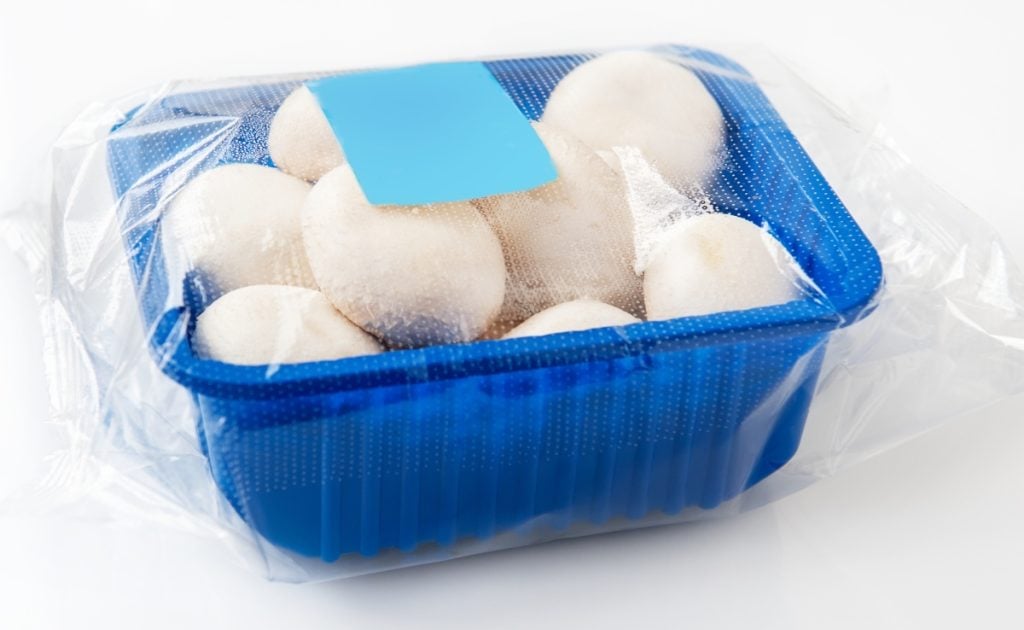
If you buy pre-packaged mushrooms covered with micro-perforated plastic, you can store them in your fridge in this packaging for up to 7 days.
In sealed plastic packaging, moisture builds up and causes soggy or slimy mushrooms. Micro-perforated plastic helps avoid this by allowing moisture to escape.
Storing mushrooms in their original packaging is the easiest method and helps prevent the mushrooms from drying out.
You can successfully store mushrooms this way for 5 to 7 days, but after this, they may start spoiling due to excess moisture.
2. In a Container Covered With Plastic Wrap
Another method used to store mushrooms is a glass or plastic container covered with plastic wrap.
When using this method, it’s important to make holes in the plastic wrap before storing them in the fridge to allow moisture to escape.
While this method prevents the mushrooms from drying and shields them from strong smells, it does not keep them fresh as long as other methods.
Moisture often collects inside the container, and mushrooms at the bottom get too wet and become slimy or moldy.
We recommend only using this method if you plan on storing your mushrooms for less than 5 days.
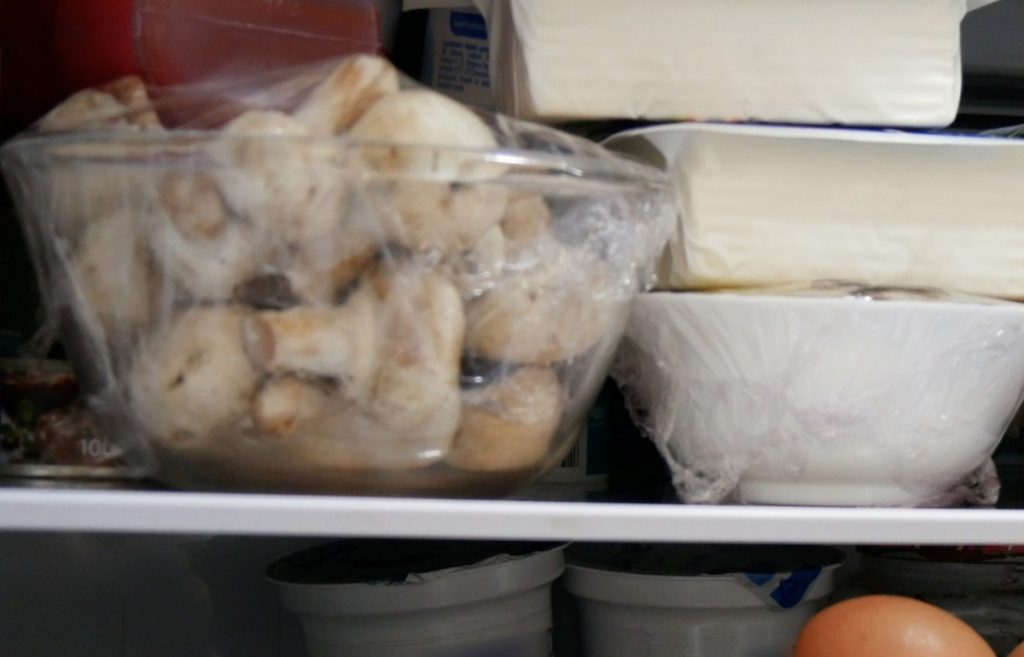
3. In Cardboard or Pulp Punnets
Cardboard or pulp punnets help to keep mushrooms fresh longer as these punnets are breathable and absorb excess moisture.
Some mushroom producers now pack mushrooms in cardboard punnets covered with a micro-perforated plastic film.
This packaging is perfect for storing mushrooms as it’s breathable, absorbs excess moisture and prevents the mushrooms from drying.
But you can also use other cardboard or pulp containers or egg cartons to store mushrooms in the fridge.
Use cardboard punnets, containers or egg cartons with cardboard lids to keep the mushrooms from drying.
And if you don’t have a lid, you can always put the punnet inside a paper bag in the fridge.
4. Wrapped in Paper Towels
Wrapping mushrooms in paper towels is another way people store mushrooms in the fridge. The paper towels allow the mushrooms to breathe and absorb any excess moisture.
But, just as important as the paper towels is the type of container you use with the paper towels.
Mushrooms wrapped in paper towels in plastic bags or glass containers will not last as long as mushrooms in paper towels in a paper bag.
The Kitchn tested 6 methods for storing mushrooms and found that of the methods they used, paper towels in paper bags kept the mushrooms freshest over a 10 day period.
5. In Brown Paper Bags

Many people recommend storing mushrooms in brown paper bags or wrapping them in brown kraft paper, and this method does keep mushrooms fresh longer.
Storing mushrooms in breathable paper or paper bags removes the issue of excess moisture. But with time, the mushrooms can begin to dry out and shrivel if they lose too much moisture.
The good news is that slightly shriveled mushrooms are still edible, and sometimes they even have more concentrated flavors, much like dried mushrooms.
6. In Cotton Mushroom Bags
If you’re looking for a reusable alternative to paper bags, washable cloth mushroom bags are another good way to keep mushrooms fresh in the fridge.
You can find fabric mushroom bags online made from 100% natural cotton that breathes well and helps to keep the mushrooms dry and fresh.
But like paper bags, with time, the mushrooms may begin to dry out, and it’s always best to eat fresh mushrooms as soon as possible.
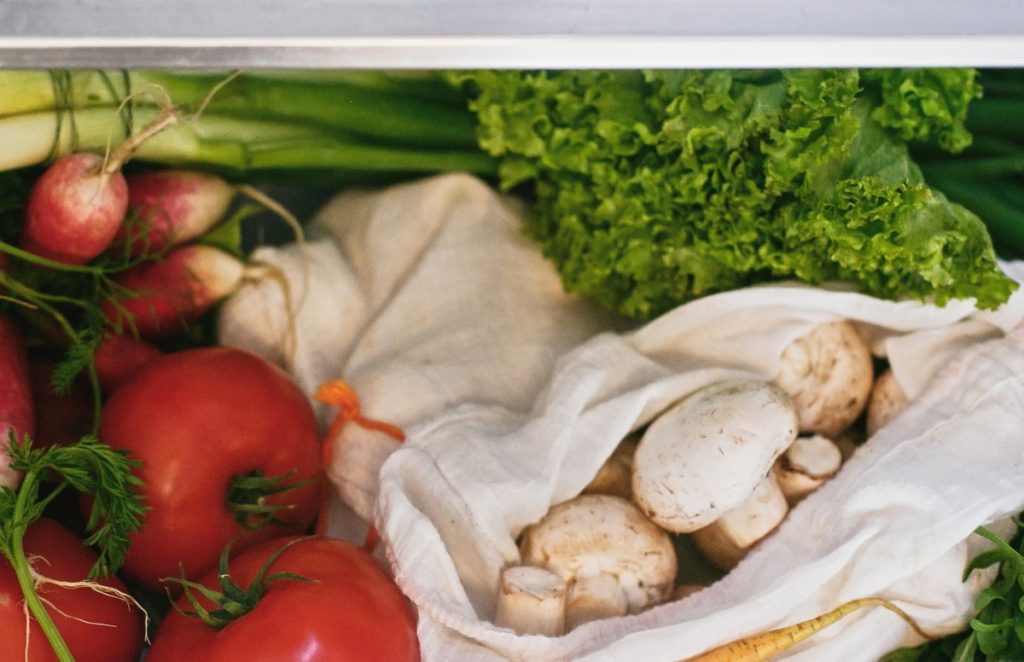
How to Store Morel Mushrooms
To keep morel mushrooms fresh, store them unwashed in a paper bag or wrapped in paper towels in the fridge.
Avoid sealed containers and plastic bags as morels need to breathe and won’t last long in closed containers.
Even when stored correctly, morels only last 3 to 5 days in the fridge.
Morel mushrooms are some of the most expensive and sought-after mushrooms worldwide and a favorite with mushroom foragers.
Because they’re mycorrhizal, they’re difficult to cultivate and often only available for a short time during morel season.
As a result, foragers often harvest more than they can eat in a few days. And, as it’s best to eat morels within 4 days of picking them, they’ll need to preserve them for future use.
Drying and freezing are the most common methods used to preserve morel mushrooms for long-term storage.
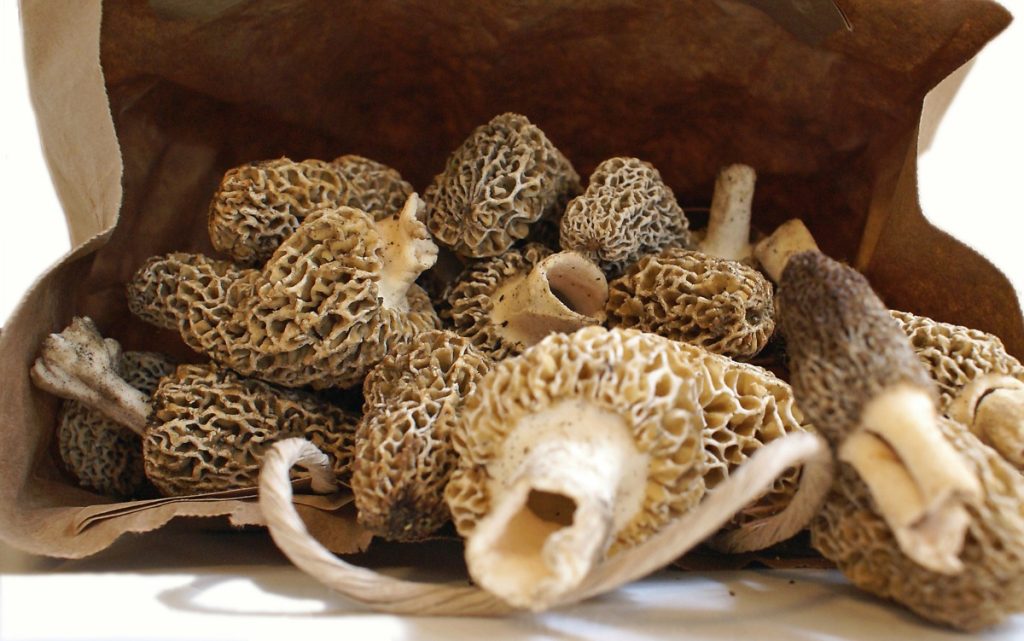
How to Store Mushrooms Long Term
Storing mushrooms in a fridge is only practical if you plan on using the mushrooms within 5 to 7 days.
When stored correctly, your mushrooms could last as long as 10 to 14 days in the fridge. But we recommend using them sooner to make the most of their unique mushroom taste and health benefits.
If you buy too many mushrooms or stumble across large quantities while foraging, it’s often better to preserve them in other ways.
The most common ways to preserve mushrooms are drying, freezing and pickling, but many more options are available.
Our step-by-step guide on how to preserve mushrooms has more information and different mushroom preservation ideas.
Can You Freeze Mushrooms?
Yes, you can freeze mushrooms, and frozen mushrooms will last for up to 12 months in the freezer.
Although you can freeze raw mushrooms, we don’t recommend it as they don’t keep their texture and often end up mushy when thawed.
The best way to freeze mushrooms is to saute them first, let them cool, then pack them into airtight containers and freeze them.
Final Thoughts
Fresh mushrooms don’t last long and are best enjoyed as soon as possible after harvesting.
You can store unwashed, whole mushrooms in the fridge for up to 10 days. To store mushrooms any longer than this, you’ll need to use other preservation methods.
There are so many ways to use your mushrooms that having a surplus should never be a problem.
If you’re looking for some mushroom recipe ideas, we have several resources for you, including easy oyster mushroom recipes and nutritious vegan mushroom recipes.
